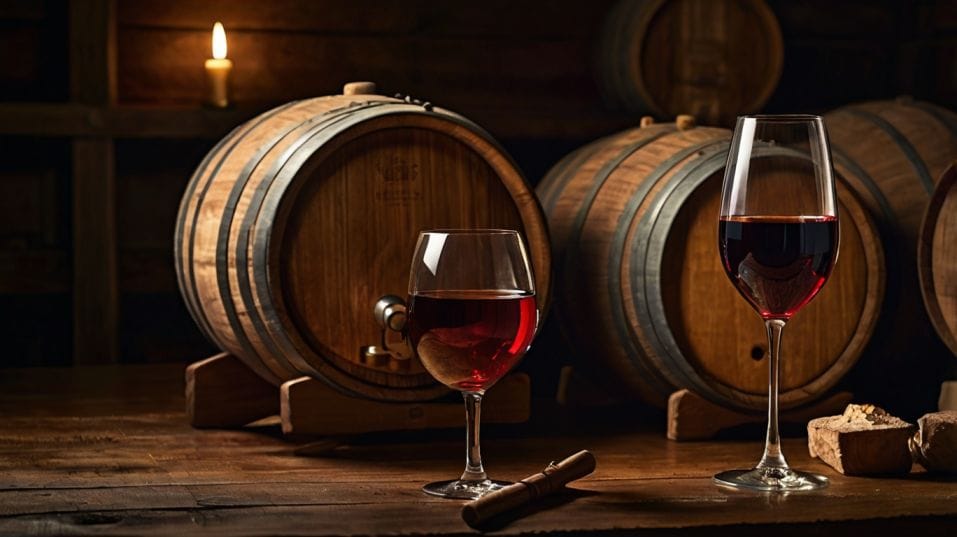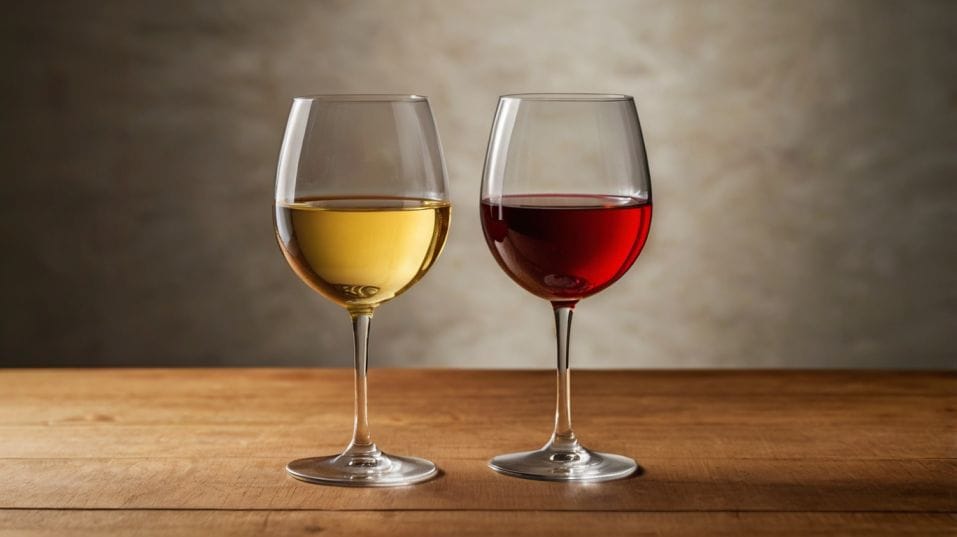Still, Sparkling, Fortified: Types of Wine Explained Simply
Learn the core wine styles—still, sparkling, and fortified—to taste, choose, and collect with confidence. No jargon, just what matters.

What if understanding wine didn’t mean memorizing grape names or fancy regions?
If you’re just starting your wine journey, focus on the three styles that actually shape how wine feels, tastes, and fits into your life: still, sparkling, and fortified.
These aren’t trivia—they’re your foundation. Master these, and you’ll drink with more confidence, curiosity, and clarity. Because good wine isn’t about showing off. It’s about knowing what you like—and why.
Still Wine: The Foundation of Taste
Still wine is what most people think of when they picture wine: no bubbles, no added spirits, just fermented grape juice crafted with intent.
It’s the most familiar form of wine, but it’s also the most nuanced—this is where you begin building real wine fluency. Still wines come in three broad colors: red, white, and rosé.
Each one is defined not just by grape variety, but by winemaking choices like skin contact, fermentation temperature, oak aging, and regional style.
Understanding these helps you read between the lines of a label—and makes your choices far more precise.
Red, White, and Rosé
- Red wines are fermented with the grape skins, which impart tannins (that drying, mouth-coating sensation), deeper color, and more structure. Some reds are bold and dense (Cabernet Sauvignon, Syrah), while others are light and lithe (Gamay, Pinot Noir). Knowing the difference isn’t about memorizing names—it’s about recognizing how the wine feels in your mouth.
- White wines skip the skins, focusing on clarity, acidity, and brightness. That zingy Sauvignon Blanc? It gets its sharpness from high acid. That rich, creamy Chardonnay? Likely aged in oak and allowed to undergo malolactic fermentation (which softens acidity and adds a buttery texture).

- Rosé sits between red and white. It’s made by briefly exposing the juice to red grape skins before removing them—long enough to gain color and light tannin, but not enough to push it into red wine territory. The result is crisp, versatile, and often misunderstood as sweet when most are actually dry.
Still wine is where you learn to taste structure over flavor. Don’t chase strawberry or cedar or toast. Instead, ask yourself: Is it light-bodied or full?
Is the acidity bright or soft? Do tannins grip your mouth or glide smoothly? Is it dry, off-dry, or noticeably sweet?
Answering those questions consistently will help you match wine to food, mood, and moment far more effectively than any sommelier’s notes ever could.
Pro tip: Buy two bottles of the same grape—one from a cool climate (like Loire Sauvignon Blanc) and one from a warm one (like California Sauvignon Blanc). Taste side-by-side. This simple exercise teaches you how climate shapes acidity, fruit intensity, and body.
Sparkling Wine: Energy, Lift, and Precision
Sparkling wine isn’t just for toasts. It’s one of the most expressive, technically demanding, and food-friendly categories in the wine world. The bubbles aren’t just festive—they shape texture, carry aroma, and act as natural palate cleansers.
There are multiple ways to make a wine sparkle, and the method matters more than the region when you’re figuring out what style you like.
How It’s Made—and Why It Matters
- The Traditional Method (used in Champagne, Cava, and many quality sparkling wines globally) involves a second fermentation inside the bottle. This creates finer bubbles and more complex flavors—think toasted brioche, hazelnut, or almond alongside bright citrus and apple. The wine ages on its lees (spent yeast), which adds a creamy, almost savory character.
- The Tank Method (used in most Prosecco) completes the second fermentation in a sealed tank. It’s faster, preserves fresh fruit flavors, and creates larger, more casual-feeling bubbles. Expect notes of pear, white peach, or melon—easy-drinking and light on the palate.
- There’s also Ancestral Method (used in pét-nats), where the wine is bottled before fermentation is complete. The result is rustic, unpredictable, often cloudy—but packed with character.
Sweetness and Style
When choosing sparkling wine, start paying attention to bubble texture and sweetness level. These two details will help you quickly find styles that suit your palate or your meal:
- Brut Nature / Extra Brut – bone dry, great with salty snacks or oysters
- Brut – dry but balanced, the most common style
- Extra Dry – slightly sweeter than Brut (yes, the naming is counterintuitive)
- Demi-Sec / Doux – noticeably sweet, better with dessert
Sparkling wines work brilliantly with high-fat foods—fried chicken, buttery popcorn, soft cheeses—because the acidity and bubbles cut through richness and reset your palate.
And they’re one of the few wines that can move easily from appetizer to main course to dessert.
Pro tip: Use sparkling wine as your go-to aperitif. It wakes up the palate and sharpens your senses, which makes whatever you taste next more vivid.
Fortified Wine: Complexity in a Small Pour
Fortified wine is where things get deep. These are wines that have been strengthened with grape spirit, usually to stop fermentation (preserving sweetness) or to stabilize the wine for aging.
The result? Higher alcohol, concentrated flavor, and often a longer shelf life once opened.
Fortified wines have fallen out of fashion in some circles, but that only makes them more rewarding to rediscover. They offer styles that still wines can’t match—intense, layered, often savory, and uniquely expressive.
Know the Styles
- Sherry (Spain): Comes in both dry and sweet forms. Dry Sherries like Fino or Manzanilla are sharp, salty, and almost nutty—perfect with olives, almonds, or seafood. Richer styles like Amontillado or Oloroso bring caramel, hazelnut, and oxidative complexity. Sweet Pedro Ximénez (PX) is dense and syrupy, great with desserts or aged cheese.
- Port (Portugal): A sweet, red fortified wine made from native Portuguese grapes. Ruby Ports are young, fruity, and intense. Tawny Ports are aged longer and develop flavors of dried fruit, nuts, and toffee. Excellent with blue cheese, dark chocolate, or just on their own.
- Madeira (Portugal): This wine is heated during production, making it one of the most age-worthy wines in the world. It’s bracing, tangy, and bold. Even sweet styles have a core of acid that keeps them fresh and vibrant.
- Marsala (Italy): Often misused in cooking, Marsala also comes in excellent dry and semi-sweet versions meant for sipping. When well-made, it offers notes of coffee, dried fruit, and caramel.
Serving and Savoring
Fortified wine rewards slower drinking and more attention. A small glass served cool (around 50–60°F) opens up over time, offering evolving aromas and surprising balance.
And because of the higher alcohol and oxidative stability, you can keep a bottle open for weeks—sometimes months—without it spoiling.
Pro tip: Start with a chilled dry Fino Sherry and pair it with Marcona almonds or a wedge of Manchego. It will change how you think about food and wine forever.
Final Thoughts
Still, sparkling, and fortified wines aren’t just categories—they’re the foundation of confident wine tasting. Each one brings a different kind of pleasure to the table: the precision of still wines, the vitality of sparkling, and the richness of fortified.
Once you understand these pillars, your wine decisions become more intuitive and your tasting more purposeful.
This week, add something new to your rotation. Not a trophy bottle or a trendy label—just something outside your comfort zone.
A lean white from an unfamiliar place. A traditional method sparkling wine for dinner, not just celebration. A small pour of Sherry after a long day.
Taste with focus. Compare styles. Build habits. That’s how your palate grows—and how wine becomes more than a drink. It becomes a ritual. A language. A skill you can carry for life.




